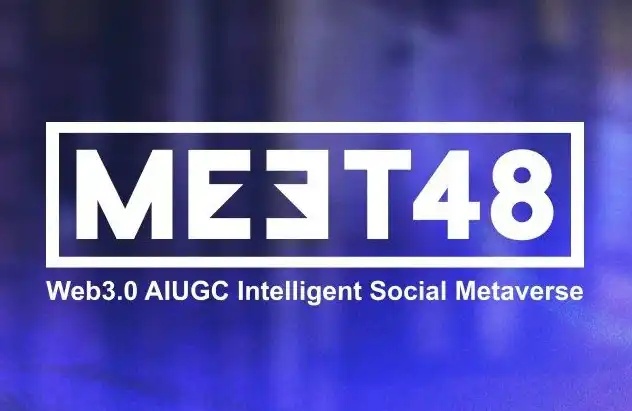Omnichain Token: A new Token standard in the full chain era

If you have been a regular DeFi participant for the past two years, you must have been puzzled by the many public chains of similar assets under different names. For example, why are USdcs in Avalanche divided into two versions: USDC and USDc.e? What are the essential differences between ETH of different standards, such as ceETH, ETH.grv, and soETH?
Indeed, with the rise of each new public chain platform in this cycle, assets across the chain has also become the rigid demand of all users in the currency circle. However, with the gradual increase of cross-chain assets, cross-chain assets standards are not uniform, liquidity fragmentation, and various security problems that follow, which also bring not small obstacles or even asset losses to the first batch of users who experience cross-chain assets.
So what are the reasons for this phenomenon? In the current situation where multi-chain development has become an inevitable trend of the industry, is there a better way to solve the pain points of users in cross-chain and provide more convenient cross-chain services?
Underlying flaws in traditional asset cross-chain Bridges
In fact, the underlying cause of the above problems lies in the asset cross-chain bridge that we often use today. As the name suggests, the only function of an asset cross-chain bridge is to facilitate the transfer of assets across the chain. However, these so-called "transfers" do not actually help users transfer assets. Instead, they use a "lock-casting" model to re-cast a Token of the original asset on the transfer chain.
In short, for the same target chain, the Ethereum that users transfer to through the A cross-link bridge is called AETH, and the Ethernet that users transfer to through the B cross-link bridge is called BETH. The two assets have different names and different security, so there is no equivalence exchange. This is the underlying cause of the confusion of cross-chain asset standards and the fragmentation of liquidity. In addition, each locking casting process increases the capital scale of the locking end of the capital pool, which also gives hackers a chance to take advantage of, which also indirectly causes frequent cross-chain bridge security accidents in recent years.
However, to completely solve these problems, it is necessary to rely on the improvement of more underlying protocol level, which is often mentioned recently, information cross-chain, or protocol layer cross-chain.
LayerZero: A protocol layer product that implements information across chains
On the information cross-chain circuit, the most eye-catching protocol layer product is LayerZero, which has been well known by the majority of users.
To put it simply, LayerZero implements information verification between public chains by deploying "ultralight nodes" on each mainstream public chain. Compared with other cross-chain solutions, LayerZero with ultralight nodes is more secure and less trusted.

LayerZero is implemented by an on-chain system (Endpoints) and two separate off-chain systems (Oracles and Relayers).
Messages in LayerZero are sent and received by endpoints, which handle the transmission, validation, and reception of messages. Oracle's main role is to move the requested block header from the source chain to the target chain and Relayer is responsible for verifying that the requested transaction is valid between the source and target chains. Currently, one of Oracle's providers is Chainlink, one of the most well-known and secure in the industry. In theory, LayerZero should be safe as long as Relayer and Oracle don't do evil at the same time.
LayerZero uses a "de-trust" mechanism that does not require trusting the intermediary service provider because it is not centrally managed by the intermediary chain like a traditional cross-chain bridge. A decentralized application built on top of LayerZero can choose its Oracle and Relayer configurations.
Through these innovations in protocol layer technology, LayerZero provides a secure and convenient underlying cross-chain protocol, which is fundamentally different from the traditional cross-chain bridge solution.LayerZero: Often mistaken for a protocol layer product that crosses a chain bridgeThe essential differences between LayerZero and a cross-link bridge are discussed in detail.
Omnichain: A full-chain solution based on LayerZero
After LayerZero successfully solved the underlying cross-chain information transmission problem, the cross-chain problems that had caused many troubles to users in terms of user experience and asset security were basically solved.
The multi-chain application built based on LayerZero can separate the underlying multi-chain architecture from the unified product of the application layer, so that end users can no longer consider the differences between different complex public chains, and only need to regard the whole blockchain ecology as a complete whole. This is the ultimate public chain form that has been abstracted by LayerZero and achieved the ultimate unity of all chains, which is what we call Omnichain.
In the full-chain ecosystem created by LayerZero, users will no longer see different asset packaging formats caused by different cross-chain Bridges. All assets in the public chain can be regarded as native assets and share the cross-chain security provided by LayerZero. Thus, in the Omnichain ecosystem, assets held by users will be more unified and secure, while also having the composability that is so important to blockchain products.
As the asset standard has moved beyond the single-chain asset formats we were used to, such as ERC-20 (Ethereum), BEP-20 (BNB Chain), or SPL (Solana), it has become necessary to rename it.
Assets on Omnichain can be classified into Omnichain Fungible Token (OFT) and Omnichain Non-Fungible Token (ONFT) according to whether the tokens are homogeneous.
Application scenario of Omnichain Token
There are a lot of basics here, but what the general reader is most interested in is how the new Omnichain Token standard will be used differently.
Here are a few typical application cases that incorporate the Omnichain standard.
(1) BTC.b (OFT)
The asset name BTC.b may be unfamiliar to many readers. Indeed, the original BTC.b was just a Bitcoin cross-chain asset released in Avalanche, and if you're not a core user of Avalanche, you probably won't have heard of it. So in terms of market recognition alone, BTC.b is much less popular than Ethereum's WBTC.
With BTC.b using LayerZero technology to become an OFT that is free to cross chains, Btk.b directly gains the ability to transfer securely between Ethereum, BNB chains, Avalanche, Polygon, Arbitrum, Optimism, Aptos, and any other blockchains supported by LayerZero in the future.

Since then, BTC.b on each chain no longer has the liquidity to be naturally divided, and users do not need to change the way they interact with the asset regardless of which chain they use BTC.b on. At the same time, it will be more conducive for other cross-chain DApps to carry out unified integration of BTC.b which adopts OFT standard.
It is also worth emphasizing that BTC.b's integration of LayerZero is very simple. Since there is no need for the project side to solve the cross-chain technical issues themselves, it only needs to update and be compatible with LayerZero's cross-chain standard, so converting BTC.b from the traditional Token format to OFT requires only two files with only about 10 lines of code.
At the same time, the new OFT version BTC.b can retain the original contract address, avoiding user confusion caused by multiple links to different addresses.
(2) PancakeSwap
The OFT version of BTC.b mentioned above only helps a single asset achieve full chain deployment, but the OFT standard also supports more complex DeFi project tokens that help integrate the ecology of different public chains while implementing multi-chain deployment, the best known of which is PancakeSwap.
PancakeSwap's native TokenCAKE became an OFTToken for multi-chain native deployment in December by integrating LayerZero. PancakeSwap was the first to integrate with Aptos, a popular new public chain, and launched Aptos PancakeBridge, which is supported by LayerZero's underlying public chain.

It is worth mentioning that the combination of LayerZero with non-EVM standard Aptos reflects LayerZero's stronger cross-chain integration ability, which not only supports the cross-chain information communication of all EVM compatible public chains nately, but also integrates non-EVMs into a unified multi-chain system.
PancakeSwap successfully launched an asset trading pair containing CAKE on Aptos with this new Aptos bridge tool. In addition, liquidity mining activities have commenced on the Aptos version of PancakeSwap. PancakeSwap, the current Aptos version of Pancakeswap, is no different from the native DeFi protocol that is deployed natively, and is supported by LayerZero's native cross-chain standard OFT.
(3) Lil Pudgys (ONFT)
In addition to helping homogeneous tokens make the transition to multi-chain deployment, LayerZero also helps NFT with native cross-chain integration.
We know that in the last NFT bull market in 2021, the Ethereum ecosystem had the strongest consensus, the largest concentration of liquidity and excellent infrastructure, and many of the well-known NFT projects were concentrated within the Ethereum ecosystem. However, NFT projects in the new public chain not only lack liquidity and community support, but also maintain a relatively isolated relationship with Ethereum's NFT ecosystem.
For a new group of users entering the market, Ethereum's high gas fee has seriously raised the threshold for new users to use, making it much more difficult for them to access mainstream NFT projects.
Therefore, many Ethereum native NFT projects in order to better reach Web3 users, there is a great demand for NFT across the chain. However, the traditional cross-chain bridge with locking casting mode is difficult to provide a good experience for cross-chain NFT. NFT assets formed across chains in this way are not only difficult to unify with the Ethereum ecology in terms of price and liquidity, but also have many difficulties in further integration in the future.

Lil Pudgys is a well-known Ethereum NFT project that has been plagued by inadequate cross-chain infrastructure. In order to reach as many Web3 users as possible, the Lil Pudgys team has been evaluating various NFT cross-chain solutions. LayerZero's Omnichain-NFT solution was the perfect fit for the Lil Pudgys team.
By integrating the Omnichain-NFT standard, Lil Pudgys became a multi-chain native NFT product that now supports mainstream public chains such as Polygon, BNB Smart Chain and Arbitrum. The Lil Pudgys that users get in the new public chain are not substantially different from those in Ethereum, and the speed of cross-chain transfer is greatly increased.
It can be clearly seen from the above cases that the emergence of LayerZero not only provides users with another choice in the already highly competitive cross-chain bridge market, but also attempts to fundamentally solve the fundamental problems in the current cross-chain bridge market. As LayerZero is adopted by more and more applications, the adoption rate of Omnichain-Token in the industry will increase greatly, and eventually become the de facto universal standard for cross-chain assets, helping LayerZero to capture more value.
Welcome to join the official BlockBeats community:
Telegram Subscription Group: https://t.me/theblockbeats
Telegram Discussion Group: https://t.me/BlockBeats_App
Official Twitter Account: https://twitter.com/BlockBeatsAsia


 Forum
Forum Finance
Finance
 Specials
Specials
 On-chain Eco
On-chain Eco
 Entry
Entry
 Podcasts
Podcasts
 Activities
Activities
 OPRR
OPRR









